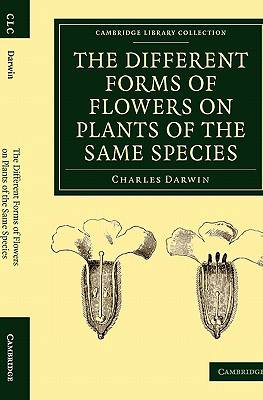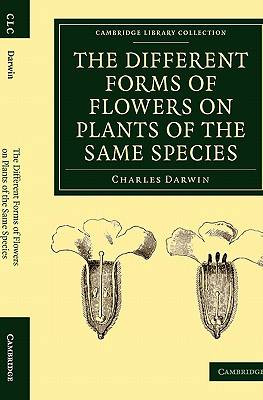
Bedankt voor het vertrouwen het afgelopen jaar! Om jou te bedanken bieden we GRATIS verzending (in België) aan op alles gedurende de hele maand januari.
- Afhalen na 1 uur in een winkel met voorraad
- In januari gratis thuislevering in België
- Ruim aanbod met 7 miljoen producten
Bedankt voor het vertrouwen het afgelopen jaar! Om jou te bedanken bieden we GRATIS verzending (in België) aan op alles gedurende de hele maand januari.
- Afhalen na 1 uur in een winkel met voorraad
- In januari gratis thuislevering in België
- Ruim aanbod met 7 miljoen producten
Zoeken
€ 95,45
+ 190 punten
Uitvoering
Omschrijving
After the publication of On the Origin of Species in 1859 Darwin became fascinated with the potential for botanical experiments to provide evidence for the process of evolution. First published in 1877, this volume is based on a series of papers concerning heterostylous plants (species which produce different types of flowers) originally published in the Journal of the Proceedings of the Linnaen Society in 1862. Linnaeus had divided the sexual relations of flowers into four groups, which Darwin uses as the structure for this volume. Darwin examines in detail plants which produce different flower forms, presenting his conclusions in terms of adaptive evolution and so providing the first functional interpretation of heterostyly. He demonstrates that these plants are adapted for cross-fertilisation, not self-fertilisation as was widely believed. The concepts which Darwin introduces in this volume continue to provide the basis for research into plant reproductive biology.
Specificaties
Betrokkenen
- Auteur(s):
- Uitgeverij:
Inhoud
- Aantal bladzijden:
- 366
- Taal:
- Engels
- Reeks:
Eigenschappen
- Productcode (EAN):
- 9781108018272
- Verschijningsdatum:
- 30/09/2010
- Uitvoering:
- Paperback
- Formaat:
- Trade paperback (VS)
- Afmetingen:
- 140 mm x 216 mm
- Gewicht:
- 462 g

Alleen bij Standaard Boekhandel
+ 190 punten op je klantenkaart van Standaard Boekhandel
Beoordelingen
We publiceren alleen reviews die voldoen aan de voorwaarden voor reviews. Bekijk onze voorwaarden voor reviews.









